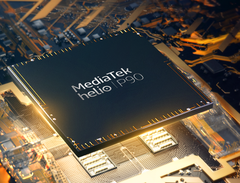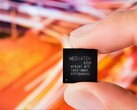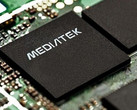MediaTek released a teaser for the Helio P90 SoC back in late November, and it looked like the Taiwanese company is ready to take on the high-end market dominated by Snapdragon, Samsung and Huawei. A few days after that teaser, insider sources claimed that MediaTek was likely to reveal the new SoC in mid-December, and this information turned out to be accurate after all. Earlier today, MediaTek officially unveiled the Helio P90 SoC that is most likely designed for premium mid-to-high-end handhelds.
There were some rumors regarding a P80 successor for the newly released Helio P70 SoC, but MediaTek might have decided to skip that model and release the P90 instead. The upcoming SoC is still manufactured using the 12 nm FinFET technology at the TSMC facilities, so it probably will not be so energy efficient compared to the 7 nm chips from the "usual suspects." Still, the octa-core CPU has a different cluster now. Instead of 4 high-end cores and 4 utility cores, the P90 makes use of a more energy efficient cluster made of 2x high-end Cortex-A75 cores running at 2.2 GHz and 6x Cortex-A55 utility cores clocked at 2 GHz.
On the GPU side, MediaTek decided to replace ARM’s Mali chip with a more potent accelerator from Imagination – the PowerVR GM 9446 running at 970 MHz. This new GPU should improve performance by at least 15%. In the imaging sector, camera support has been extended to support up to 48 MP of combined resolution across two sensors, but the most important additions are the 480 fps video recording speeds for slow motion content plus triple ISP for RAW images in conjunction with improved AI capabilities that allow for better image quality in low-light environments. New imaging features also include: 5-person human pose tracking, 3D pose tracking and AI depth engine.
Speaking of the improved AI capabilities, the Helio P90 introduces the new APU 2.0 architecture that can deliver 1127 GMACs. It also supports augmented and mixed reality acceleration via Google Lens and ARCore, and MediaTek provides support for popular frameworks such as TensorFLow, TF Lite, Caffe and Caffe 2 through the new NeuroPilot SDK developed in collaboration with Google.
Unfortunately, 5G is not supported by this new SoC, even though the company is heavily investing in 5G technology. The Helio P90 is still limited to Cat 12 DL / Cat 13 UL 4G LTE, however, MediaTek is now introducing support for Bluetooth 5.0.
MediaTek stated that the Helio P90 production has already begun and sampling should occur in early 2019. The first devices powered by the new SoC should arrive sooner than expected, possibly as early as Q1 2019.
I first stepped into the wondrous IT&C world when I was around seven years old. I was instantly fascinated by computerized graphics, whether they were from games or 3D applications like 3D Max. I'm also an avid reader of science fiction, an astrophysics aficionado, and a crypto geek. I started writing PC-related articles for Softpedia and a few blogs back in 2006. I joined the Notebookcheck team in the summer of 2017 and am currently a senior tech writer mostly covering processor, GPU, and laptop news.
> Expert Reviews and News on Laptops, Smartphones and Tech Innovations > News > News Archive > Newsarchive 2018 12 > MediaTek officially announces the Helio P90 SoC
Bogdan Solca, 2018-12-13 (Update: 2024-08-15)



















